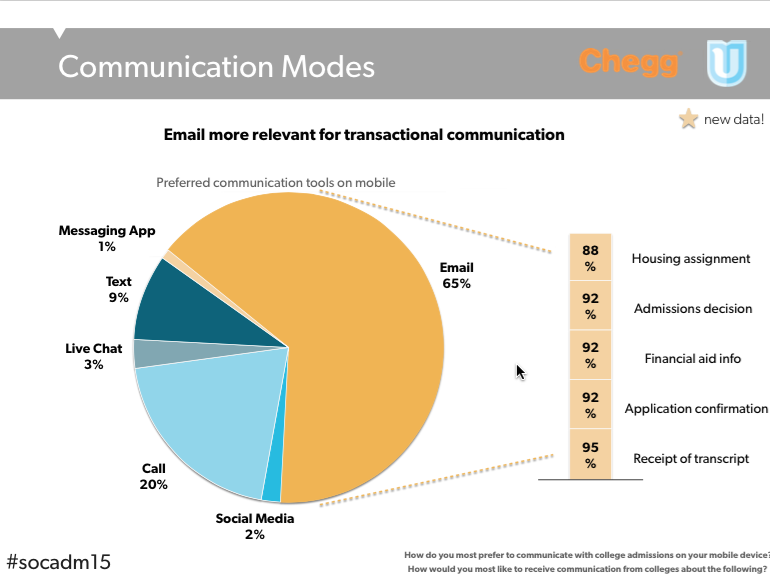Chegg’s Social Admissions Report, which was released yesterday, contains plenty of important insights about how teens conduct their college searches in today’s digital, social, and mobile world. Higher ed enrollment managers and marketers, social strategists, and web developers should read it carefully.
One key distinction the report makes is between digital tools (for example, a .edu website or comparison sites like US News), which students use to ask questions like “how do I get in?” and “what majors do you offer?” and social networks, which teens use to check out institutions with peers or current students. And of course, they use their smartphones to visit websites and interact on social networks.
[Tweet “Seven Key Findings from Chegg’s Social Admissions Report. #mStoner”]
Among other important insights the report offers:
- A college website is the key owned destination for prospective teenage students: 87 percent say it’s “very” or ”extremely” useful.
- They use smartphones to visit college websites (81 percent do, and 59 percent do it at least once a week), but only 17% percent of students rated college websites as “excellent” when viewed on a mobile device.
- While engagement by teens on Facebook is declining (one teen summed up the feelings of many peers in noting, “Facebook is like a family reunion you can’t leave”), it ranks first in the social media sites teens visit for college information prior to enrollment: 45 percent use it at least weekly.
- If you don’t believe that teens are experienced researchers, you’re wrong! They use digital and social tools to learn about colleges. And they’re adept at searching and discovering information on the channels they use.
- They also pay attention to “traditional” channels, especially email (see the chart below).
- Finally, they expect personal attention and fast responses: 77 percent say they want to interact with admissions counselors on social media and 91 percent would like to receive personal communications from admissions. And 61 percent of teens say they expect a response within a day of contacting a college rep.
There are many more findings in the report.
And if you’d like to hear about the findings and key recommendations, check out this recent Admissions Live episode. Chegg’s Director of Marketing and Outreach Gil Rogers joined the network for a special preview of the report.
Finally, don’t forget to register for Chegg’s webinar on 3 February. But do that today: space is limited.
-
Michael Stoner Co-Founder and Co-Owner Was I born a skeptic or did I become one as I watched the hypestorm gather during the dotcom years, recede, and congeal once more as we come to terms with our online, social, mobile world? Whatever. I'm not much interested in cutting edge but what actually works for real people in the real world. Does that make me a bad person?
